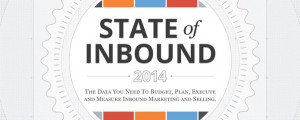Building a business is like raising a child. We see them grow up over the years, go through hard times and good, learn from each success and failure, and eventually blossom into something more wonderful than we ever could have imagined.
One of the more challenging stages of the process is a business’ adolescence. It’s no longer a scrappy startup but not yet a full-grown business with established and consistent processes.
Cultivating a workplace culture that embeds the right norms and consistent operations isn’t easy during this stage. The environment is changing rapidly, and like any teenager, the organization is trying to figure out what it wants to be when it grows up. Your team is trying to understand what works and what doesn’t. Leaders are managing the tension between growth and stability. And the rapid pace of both internal and external change can take its toll on everyone involved.
These challenges are often amplified for tech startups. The rate of innovation and change in tech moves at breakneck speed, employee turnover is high, and these leaders are left spinning so many plates as their companies grow that one wrong move can mean disaster. It’s no wonder that only one-third of businesses make it past their 10th anniversary.
Growing Up Fast
As an entrepreneur myself, I’ve seen this shift happen in real-time at my company, gothamCulture. Things change every day as we evolve and grow into a more mature and sustainable competitor in our space.

Jumping to the next bigger pond can be risky. It requires a lot to grow your organization to that next level of maturity and performance. You need everyone pulling in the same direction to see it through and it demands that leaders make some tough decisions along the way.
Charles Ramsey, CEO of San Francisco-based Sauce Labs, knows all about these challenges. He and I recently discussed how his team has cared for a growing tech company over the last nine years.
Customers come first. “I look at the world from a customer first and technology second perspective,” says Ramsey. “However, Sauce has a very strong engineering-centric culture and I really want to preserve that dynamic. In other words, great code that does not solve a fundamental customer problem is just not very important.”
Culture is not a static concept. “Today, we are enjoying market confirmation for what our founders defined as best practices for testing. Like most growing companies, however, the organization had to go through several cultural and physical iterations to get here.”
An intentional culture drives your strategy. “Culturally, we needed to change from being employee focused to customer focused. Further, we needed to move from selling to anyone and everyone to having an enterprise focus. Changes in both culture and market happened in parallel and it helped align the entire team’s direction.”
So, what can we learn? How can you care for your company culture through its awkward teenage years and set it up for long-term success?
7 Things Every Awkward Teenage Company Needs
1. Choose your clique carefully.
Is your client the primary customer? Is it your team? How about your shareholders? You may need to please multiple stakeholder groups as your company grows, and being very clear about your primary customer will help everyone in the organization prioritize their efforts.
2. Figure out what you want to be when you grow up.
Your teenage company may not know what it wants to be. Like a Choose Your Own Adventure story, there are so many possible directions it’s easy to get drawn down the wrong path.
For Sauce, this finding their direction meant maintaining focus on automated testing before the market had embraced it. “It’s about discipline and rigor in the planning process,” says Ramsey. “There are only so many things that any company can get done in a year and it’s critically important to remain true to the vision without being dogmatic. Again, this is a dynamic and fluid industry and as a SaaS company, we must deliver value or we are going to underperform.”
3. Manage the peer pressure.
As a leader of a growing company, you’ll often take on more future-focused activities while your team members are managing the day-to-day. This is okay. So long as you hire and develop a highly-skilled team that is clear about your intent, you can focus on steering the organization toward the future. Bringing people along with you is essential to ensuring folks understand what your role is and why you’re doing the things you’re doing. Some may try to stop you or change your course but it’s up to you to remain stalwart in your vision.
Ramsey adds, “We have a process that we utilize to track and evaluate market changes, competition and ‘where the puck is going’, as Wayne Gretzky used to say, over the next 12-36 months. It’s important to have a consistent process. We talk to customers and prospects regularly to course correct. And while that feedback is incredibly valuable, at the end of the day it’s not their business to tell us what to do. We have to make some hard decisions, with good but never complete data, and make those changes quickly.”
4. Run for class president.
Part of growing up is making hard decisions that allow the organization to concentrate on one, maybe two things, and do them very well. “Our ‘hard thing’ was committing to and focusing on what was required to be a great enterprise vendor,” says Charles. “To punch above our weight. It was a particularly challenging decision because when we made it, the majority of the software vendors and the investment community focused on low friction, low cost web and inside sales as the ‘model of the future.’ But there is no ‘one model’ and I am 100 percent convinced we made the right decision for our customers.”
5. Workplace culture: nature vs. nurture.
Your culture will happen whether you’re intentional about it or not. And if you dive into the work without first defining who you are and how you want to grow, your startup culture can quickly grow out of your control. Once it’s solidified in the company DNA, it’s a challenge to go back and break the mold.
“This is hard work that never goes away,” says Ramsey. “The filter that every employee uses to examine the company when it comes to the important things — like the opportunity for advancement, learning, fun and growth — changes continually. One of the hardest parts of being a CEO or leader of a team is that you own this and it needs to be examined religiously. If you don’t take care and think about these things, your employee’s next employer will!”
6. To thine own self be true.
“It’s important that Sauce employees believe in the market, the vision for the company, and the fact that we are solving a real customer problem,” Charles explains. “As an executive team, we focus on how we deliver that in an honest and credible fashion. Getting the team to embrace the challenges of building, marketing, and selling an enterprise product has been hard but healthy. When a customer pays 6 to 7 figures a year, they expect you to help them be successful. We are dealing with our customers’ careers. They are betting on us. And our organization needs to understand that it is more about them than it is about us.”
7. Let’s talk about your feelings.
As your organization grows, you as the founder will find it more and more difficult to keep everyone rowing in the same direction. Consider creating space for your leadership team to come together on a regular basis to align around what’s most important and help them develop the capability to communicate the message throughout the organization.
Enjoy The Journey
Taking care of a company as it grows up is no small feat. And if you’re one of the fortunate business leaders who has led your company through nine or ten years of growth, take a moment to celebrate. Everyone on your team is working hard to move the company in the right direction, so taking a moment to pause, reflect, and give yourself and your team a pat on the back can help boost morale during this trying time.
To steal a line from Ferris Bueller: Life in a growing teenage company moves pretty fast. If you don’t stop and look around once in a while, you could miss it.
Business & Finance Articles on Business 2 Community(65)






